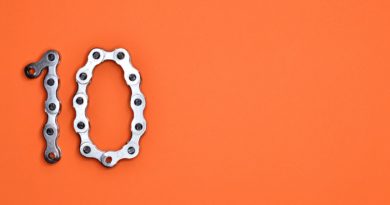One Day I Was In Debt — The Next Day I Had A Net Worth Of One Million Dollars
A true story

When I say the next day, I actually mean 20 years later. However, in many ways, it does feel like it was only yesterday that I was broke. Time flies.
I didn’t write the headline because I wanted to deceive you. I wrote it because it contains an important lesson. Act on this lesson, and you can easily get to one million dollars.
The lesson is very simple. Twenty years in the future seems so far away that the majority don’t bother planning for it. It’s 20 years away. There’s no rush. They can start planning someday. But not today.
But someday never comes. What happens instead is that 20 years fly by. Then we look back, and it feels like yesterday. If only we’d planned a little. Oh well, we missed our chance. But we promise we’ll plan for the next 20 years. Not today, though. But someday soon. After all, there’s no rush. We have a whole 20 years to start thinking about it.
And that, my dear friends, is how some people stay poor their whole lives.
Let’s take a look at what you could have at age 60 if you started investing at age 20.
Even if you saved and invested just $10 a month between ages 20 and 60 you’d have over $50,000. This is assuming you invested the money in a fund that gave a10% annual return.
If you’d invested $100 a month, you’d have over $500,000. I bet most people could afford to invest that amount.
If you’re someone that absolutely can’t afford it, don’t worry. Just invest whatever you can each month, even if it’s $10.
The average American that left school without a diploma earns an average of $3,300 a month. Saving $100 of that is only around 3% of income.
Most Americans earn much more.
I’m sure most could afford to invest $200 a month if they really wanted to. If you invest that amount monthly, you’ll be on target to have a cool $1 million by age 60.
So, back to me. Is this how I did it?
No, it’s not. I didn’t know about all the above when I was 20. I didn’t even have a job. I spend most of my 20s unemployed and living on benefits.
I only mentioned the above method because it’s a much easier way to build wealth than what I did.
I didn’t start university until I was almost 26. I graduated just before my 29th birthday.
I then set about building my wealth. I was years behind most people.
I set about building a career, I invested in property, I built an ecommerce business on the side, I ran a travel blog, I flipped websites, I invested in index funds, and a lot more.
In other words, I hustled as much as I could. It was also a ton of fun. Making money is a fun activity if you don’t stress about it too much.
The key is to have patience. It doesn’t happen overnight.
It took me just over 20 years. I was aged 50 when I reached $1 million.
Then things took a turn for the worse. Some things didn’t work out so well, and I dropped back down a fair amount. You have ups and downs in life.
Now I’m back on track. Hopefully, I’ll get back to $1 million in the next few years.
The image at the top is the cover of a book I’ve almost finished that details everything that I did. It’s not a how-to book, but rather a book to help motivate you. It will teach you some important lessons. It’s certainly not a step-by-step guide.
Mindset is the most important aspect of building wealth. Hopefully, the book will help you with that.
It’s just my story. Take it for what it is.
Other people build wealth in different ways. No one way suits everyone. And there’s no exact blueprint to follow, whatever anyone tells you.
VERY IMPORTANT
Someone can tell you EXACTLY how they bought 5 properties and flipped them to make $500,000. But they will have done that based on their skill set and experience. You’ll have different skills, different experiences, and a different mindset. You can never follow exactly what someone else has done. I think this is where many go wrong.
They look at the money to be made instead of the skills needed. They often assume that no skills are needed at all.
Don’t make that mistake.
If you enjoyed reading this, you may also like the following.


